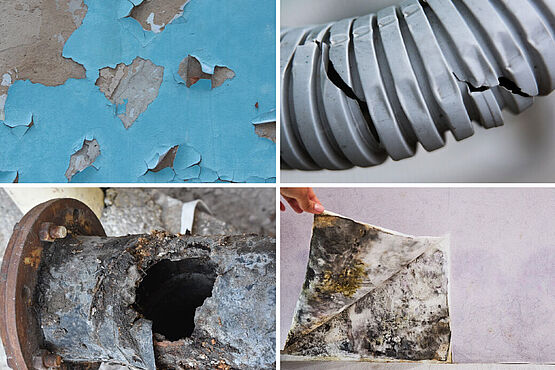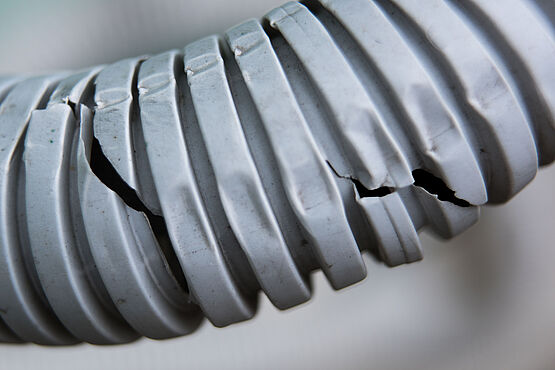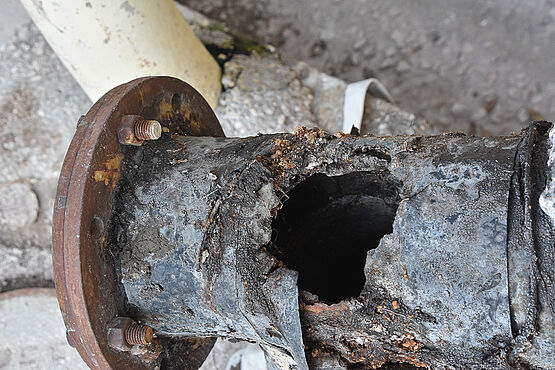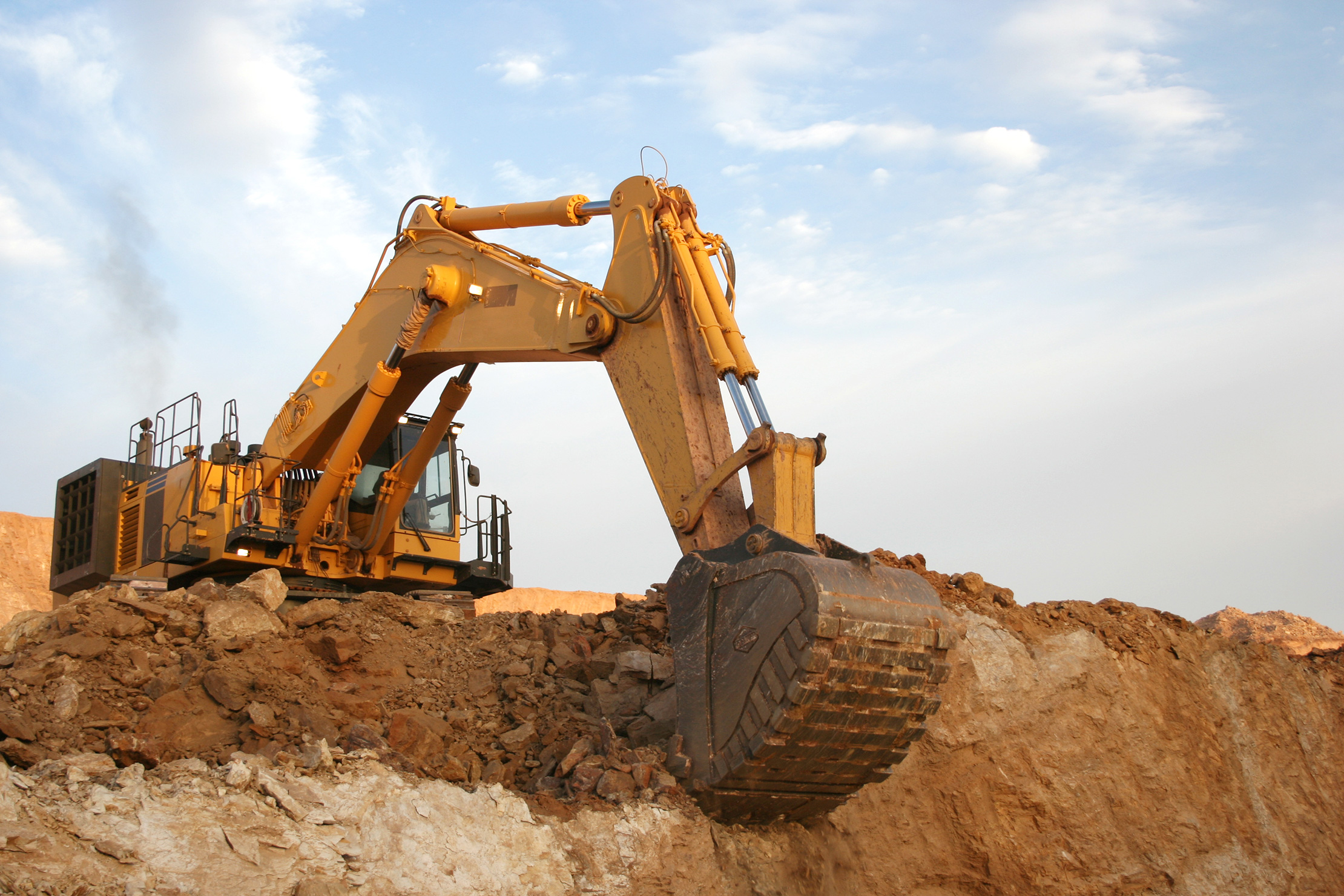Damage analyses: identifying material damage and its causes
Material damage can occur to buildings, materials or construction components. These damages often entail far-reaching consequences and additional costs. Causes are manifold and depend on many factors.

WESSLING is your partner if you want to conduct a systematic damage analysis. We will assist you to take stock, identify the cause of damage by using analytical methods, and provide you with solutions for repairing the damage. Damaged material reduces the value of a building or product and can even render it unusable. Damage to building materials and components can also cause costly production losses. This makes it all the more important to avoid defects and analyse their causes in order to promptly limit economic losses and any subsequent damages.
WESSLING expertise for material damage: analysis, damage hypotheses and adjustment tests
We work as a team of experts from various disciplines and combine consulting and instrumental analysis. We prepare a damage hypothesis, with you, either on-site or on the basis of your products, materials or components. Possible damage patterns may include mould on walls, pitting in metal, damage to paint or varnish, and the breakage of plastic components.
Analysis of materials
In our laboratories we conduct instrumental analyses to categorise the damage, and adjustment tests to find its cause.
We analyse the following materials:
- Metals: aluminium, iron and steel
- Inorganic non-metallic materials: glass and ceramics
- Organic-polymer materials: plastics and wood
Identifying the cause of damage, based on the results of our analyses, is the prerequisite for rapid remedial action.
Your benefits from a damage analysis
Systematic tests are used to derive targeted measures both to avert and prevent damage. Failure analyses, according to the VDI 3822 series of guidelines, will result in the optimisation of the selection of materials and in the improvement in quality assurance for you.
Contact person for issues relating to damage analysis
We will be happy to support you.
- André Schmitz
- +49 2505 89-673
- andre.schmitz@wessling-ce.de








